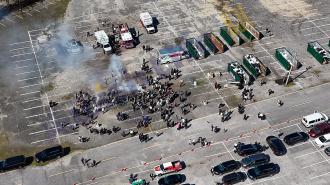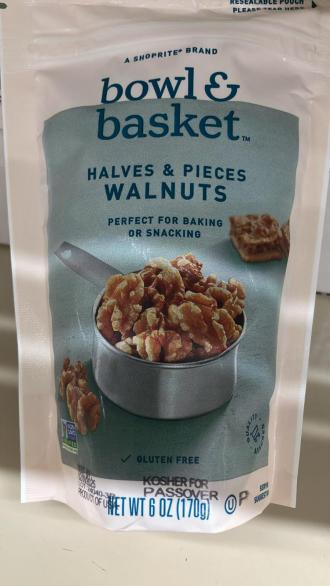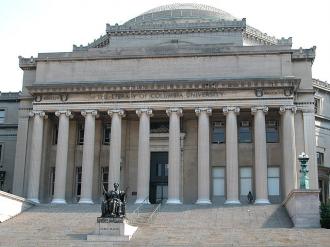Baltimore, MD - Aug. 28, 2016 - Today, 24 Menachem Av, is the Yahrtzeit of my late father in law,Yechezkel B'Reb Chaim Halevi, Chester Siegel, ZT'L. I have written several times over the years of his life. Today, I would rather focus on his times. In a short while, Feigi and I will be driving up to Lakewood for the Bar Mitzvah of one of Chester Siegel's many great grandchildren, kein yirbu. Yechezkeel Zwieback was born 13 years ago on the yahrtzeit of his great grandfather. Yechezkel is growing up in Lakewood, New jersey in an environment that simply did not exist in the United States when Yechezkel Siegel was his age. So let me reminisce a little about how it used to be in "olden days".
When I first came into the Siegel family by marrying their daughter, Feigi, in 1969, the frum community of Baltimore could be described as consisting of three groups, none of them very large. The "Yekkes", the Germans of Shearith Israel. Many of them had come to Baltimore just before and after World War II. They were very staunch in their devotion to the customs and practices, their minhagim, and they were all shomer Shabbos. You could not be a member of the shul if you were a mechallel Shabbos. There were a very few descendants of earlier members who were still frum, but, not that many. The shul was not that large in membership, but it was a center of orthodoxy. One reason so few of the earlier generations of the shul, which was over 100 years old even back then, had drifted away, was that the earlier generations did not attend TA, where the rabbeim taught in Yiddish. Those who remained frum were very committed . "Stubborn" may have been a way to describe them. It wasn't based necessarily on scholarship as much as adherence to the ways of their parents. When I came into the family, that was the shul to whch my in-laws belonged. Not because they were German, but, because it was the frum shul in Upper Park Heights.
The second group were the "refugees". That may seem pejorative and it probably was meant that way, but that is how the "greeneh" were called by those who had come before them. A very significant number of the students in Ner Israel and in the other mosdos were children of Holocaust survivors. I point out that over time, this group may have become the majority of the frum world. Certainly if you read Mishpacha or HaModia, you would think that the only frum Jews in America were the Holocaust survivors. Certainly in 2016, they are growing very fast and do indeed represent a large portion of the community. Nobody would dare dismiss their descendants as "New Americans". They have come into their own and are in the forefront of every good cause. The Ud mutzal May aish, the brand saved from the inferno, have become the re-builders of a world that others gave up on ever recreating.
There were a few shtibelach led by Rabbi Taub and Rabbi Sternhell, zichronom livracha, that were centers for frum survivors. They had their own little cheder, Shearis Hapleita. The boys were taught in Yiddish and pronounced Hebrew the way it had been done in their "alteh heim". The cheder only had Jewish studies, the boys walked over to TA in the afternoon for their English classes. Today, nobody even calls it by that name. Everybody speaks of TI, which is a large school with a fine building. It wasn't what many would have predicted back a generation or two ago.
Now I come to the world of Chester and Rosalyn Siegel, ZT'L. This third group consisted of people born in the United States, or who came over as young children. There werent that many of them. To give you several examples .
Rabbi Herman Neuberger, ZT'L, told me that when he first married his wife, Judith, aleihem hashalom, there were no other frum young couples that they could visit on Shabbos afternoon in the Forest Park neighborhood where the Yeshiva was located, 4411 Garrison Blvd.. There were others, like my in-laws, but they lived in other neighborhoods.
I want to describe the generation of Chester Siegel and his compatriots as "those who did not submit", they never gave in to the glitter of America. They were born in an era when most young people were abandoning Shmiras Shabbos. It was a time before going to day schools was even an option. TA, in my father in law's youth, was not even a day school. It was an afternoon school. You went to public school all day and then in the late afternoon sat and learned in Yiddish, when other kids were playing baseball. Children were being pulled in by Missionaries and the existing shuls catered exclslusively to the older generation and everything was in Yiddish, at a time when kids wanted to be real Americans.
Chester, and his older brother Morris, ZT'L, and a number of other American young boys started a club for shomer shabbos boys and girls. Bais Yaakov did not yet exist. In interviews I did with elderly people who had gone to the Adas, the club and later shul they formed, it was their life line. It was a place where a boy or girl who wanted to be shomer shabbos was not the "oddball". To give one example, Rosalyn Weinstein of Altoona, Pennsylvania came to visit Baltimroe in the summer in the early 1930's. Her friend took her to the Adas,where the frum boys and girls got together. She met her future husband and by the end of the summer, he wanted to get engaged. She returned to Altoona to finish high school and then they were married in East Baltimore on the street in front of the Adas with the boys holding the poles of the chupah. For many years, Chester and Rosalyn led the youth groups and were "mashpiah" on numerous kids who later became the fathers and mothers of frum Baltimore.
They were married for 18 years before Rosalyn became pregnant. She carried the child to term but, in the hospital, just before a C Section, the nurse gave her the wrong medicine that killed the unborn child. We pray to Hashem not to bring us "Lo lidei nisoyon" not to test us in this way. Who can imagine the pain of a childless couple that experience such anticipation and then distress. Yet, Chester and Rosalyn never wavered in their emunah and bitachon and a year later, their daughter Feigi was born and then their son Chaim. Thus, my wife is literally a generation younger than her first cousins. Rosalyn had been the long time secretary, with Rose Leibtag, at Ner Israel. With the birth of her daughter she moved over to teaching nursery at Bais Yaakov. I once heard her tell a visiting rabbi, "I was in the yeshiva for many years and then I went into chinuch."
HaModiah, in its obituaries, often describes Eastern European Jews as "fahrtzeitik yid", Jew from an earlier time. Let me describe such a Jew of yesteryear, who never was in Europe,even as soldier in World War II.
Chester Siegel attended shul morning and evening and was distressed if he ever missed davening with a minyan. He attended a number of shiurim devotedly, Rabbi Kulefsky's Wednesday night shiur at the Adas and another taught by Rabbi Mayer Katznelson given on Motzoei Shabbos at Shearith Israel. He gave a shiur in Chumash to other baalebatim on Shabbos afternoon at Shearith Israel. By the way, no one ever called it "Glen Avenue" in those days. The name was special, the "Remnant of Israel", the few frum Jews who had not been drowned in the flood. He came up with many original vertlach and was a poplular teacher, although he earned his parnossah as a salesman. He once explained to me that he did not like being a traveling salesman-manufacturer's representative, traveling much of the time and living off of sardines and crackers. He told me that this was what he had to do to be a Shomer Shabbos, so that he could choose not to work on Shabbos or Yom Tov. Who today even grasps how difficult it was to be a Shomer Shabbos in the 1930's and 1940's and 1950's.
Like many of their "Depression" era generation, they had no desire for luxuries. They lived a modest lifestyle totally centered around Torah and Mitzvos. One time, he took me to the graduation ceremony of Bais Yaakov. He had no chlidren or grandchldren in the school at that time, but, he felt that it was important ot show support for Bais Yaakov.
Who today even grasps such a concern.The shools in those days did not have multiple classes for each grade and not all the children in TA or Bais Yaakov came from shomer shabbos homes. The hashkofos of Chester Siegel were authentic, fahrtzeitik. He was very proud that his son learned in Philadelphia and then in Lakewood.
Around 25 years ago , Ner Israel Ladies Auxiliary honored the memory of Rosalyn Siegel with a luncheon at the Royal Restaurant. Rebbetzin Chana Weinberg, oleha hashalom, presented us with oil paintings of Chester and Rosalyn Siegel, painted by Mr. David Schuman, ZT’L.
So, today, we will go up to the thriving Torah city of Lakewood.
We live in a Baltimore with so many new shuls and schools that one can't keep up.
We owe a lot to the previous generations who swam against the stream and who were ridiculed for sticking to outmoded and obsolete ways that had no place in America. Today, we can say with Dovid HaMelech: Moshivi Akeres habayis, Eim habonim semacho"
Hashem has blessed the long childless couple with children and today there are many little Yechezkel's and Rivka's growing up in word full of Torah and Yiddishkeit.
We owe much to the pioneers who didn't give up.















